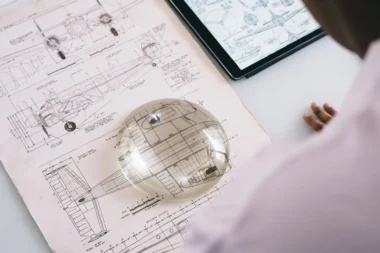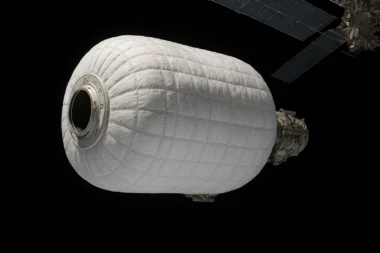Introduction:
Supersonic missile technology has revolutionized modern warfare, enabling faster response times, increased range, and enhanced accuracy in engaging targets. The development of supersonic missiles has been driven by the need to overcome the limitations of subsonic counterparts and maintain air superiority in a rapidly evolving battlefield. With their ability to fly at speeds exceeding Mach 1, these missiles can reach targets more quickly, reducing the response time and increasing the chances of mission success. Their high maneuverability and precision guidance systems make them formidable weapons in engaging stationary and moving targets.
Operational Principles of Supersonic Missiles:
Supersonic missiles operate on the principle of aerodynamics, utilizing advanced airframe designs and propulsion systems to achieve and sustain supersonic speeds. The aerodynamic shape of the rocket, including its streamlined body and optimized control surfaces, minimizes drag and maximizes maneuverability. The propulsion systems, such as solid rocket motors, ramjet engines, and scramjet engines, provide the necessary thrust to propel the missile through the air at supersonic velocities. The control systems, including fins, flaps, and thrust vectoring mechanisms, enable precise maneuvering and trajectory control.
Components of Supersonic missiles:
Supersonic missiles are complex systems with several vital components that achieve high speeds and precisely engage targets. The main features of supersonic missiles include:
- Airframe: The airframe of a supersonic missile is designed to minimize aerodynamic drag and provide stability during flight. It is typically streamlined and incorporates control surfaces such as fins and flaps to maneuver the missile.
- Propulsion System: The propulsion system generates the necessary thrust to propel the missile at supersonic speeds. Various propulsion systems are used, including solid rocket motors, ramjet engines, and scramjet engines, depending on the desired speed and range of the missile.
- Guidance and Navigation System: The guidance and navigation system enables the missile to accurately track and reach its intended target. It consists of sensors, such as inertial measurement units (IMUs) and GPS receivers, which provide information about the missile’s position, velocity, and orientation. Onboard computers process this data to calculate the optimal trajectory and make course corrections if necessary.
- Warhead: The warhead is the payload carried by the missile, designed to inflict damage on the target upon impact or detonation. Different types of warheads are used, including high-explosive, fragmentation, and penetrator warheads, depending on the desired effects and target characteristics.
- Control System: The control system of a supersonic missile consists of actuators and control surfaces that enable the missile to change its direction and maneuver in flight. By adjusting the position of the control surfaces, the rocket can perform trajectory adjustments and engage moving targets.
- Communication System: The communication system allows data transmission between the missile and the command center or other platforms. It enables remote control, target updates, and real-time monitoring of the missile’s status during flight.
- Countermeasures: To enhance the survivability of the missile against enemy defenses, supersonic missiles may incorporate countermeasures such as chaff, flares, or electronic jamming systems. These countermeasures are deployed to confuse or divert enemy defenses and increase the chances of successful target engagement.
Each component is vital to a supersonic missile’s overall functionality and effectiveness. Through the integration and synchronization of these components, supersonic missiles can successfully achieve high speeds, maneuverability, and precision to engage targets in various operational scenarios.
Propulsion Systems for Supersonic Missiles:
Supersonic missiles employ various propulsion systems to achieve their high speeds. Solid rocket motors are commonly used in the initial boost phase, providing a significant thrust to accelerate the missile rapidly. Ramjet engines rely on air intake at supersonic speeds and are utilized in sustained supersonic flight. They compress incoming air, mix it with fuel, and combust it to produce continuous thrust. On the other hand, Scramjet engines operate at hypersonic speeds and achieve combustion by supersonic airflow. These engines are highly efficient and enable even faster speeds, making them suitable for long-range and high-speed missiles. Hybrid propulsion systems combine the benefits of solid rocket motors and air-breathing engines, offering versatility and improved performance.
Guidance and Navigation Systems:
Supersonic missiles rely on advanced guidance and navigation systems for precise target engagement. Inertial navigation systems (INS) form the basis of missile guidance, utilizing accelerometers and gyroscopes to track the missile’s position, velocity, and orientation. Global Positioning System (GPS) receivers often integrate with INS to enhance navigation accuracy and provide real-time positioning updates. Terminal guidance systems, such as radar homing or infrared seekers, guide the missile accurately toward the target during the mission’s final phase. These systems use onboard sensors to detect and lock onto the target, enabling high-precision engagement.
Warhead Technology:
Supersonic missiles employ various warheads depending on the intended target and mission objectives. High-explosive warheads are commonly used to inflict damage on a wide area, while fragmentation warheads produce a lethal spray of fragments upon detonation. Penetrator warheads penetrate hardened targets, such as bunkers or fortified structures, before detonating. Smart warheads, equipped with advanced sensors and programmable detonation mechanisms, offer enhanced flexibility and tailored effects. The warhead selection depends on the target’s nature, desired results, and mission requirements.
Countermeasures and Defense Mechanisms:
Supersonic missiles pose significant challenges to defense systems due to their high speeds and maneuverability. As a result, various countermeasures and defense mechanisms are employed to detect, track, and neutralize these threats. Radar systems, including long-range surveillance and fire control radars, see and track incoming missiles. Missile defense systems, such as surface-to-air missiles and anti-missile interceptors, are deployed to intercept and destroy supersonic missiles. Electronic countermeasures, such as jamming or decoy systems, are also utilized to confuse or distract the missile’s guidance systems. Continuously developing defense mechanisms is crucial to mitigate the threat of supersonic missiles effectively.
Real-World Applications:
Supersonic missiles find applications in various military domains, including air-to-air, air-to-surface, and surface-to-surface engagements. Air-to-air supersonic missiles are designed for aerial combat, allowing fighter aircraft to engage enemy aircraft at long ranges and high speeds. Air-to-surface missiles are utilized for precision strikes on ground targets, including enemy installations, vehicles, and structures. Surface-to-surface supersonic missiles offer long-range strike capabilities, enabling the engagement of targets located far from the launch platform. These missiles are crucial in modern warfare, providing military forces with rapid response and increased operational flexibility.
Challenges and Limitations:
Despite their significant advantages, supersonic missiles also face several challenges and limitations. One of the primary challenges is the development of reliable propulsion systems capable of sustaining supersonic speeds over long distances. The high rates generate intense heat, causing thermal stress on the missile’s components and materials. Furthermore, the cost associated with developing, producing, and maintaining supersonic missile systems is often substantial, limiting their widespread deployment. Additionally, the proliferation of supersonic missile technology raises concerns regarding arms control and the potential destabilization of regional security.
Future Developments:
The future of supersonic missile technology holds immense potential for further advancements. Ongoing research focuses on developing more efficient propulsion systems, including advanced scramjet engines and hypersonic glide vehicles. Advances in materials science and thermal protection technologies aim to enhance the durability and thermal resistance of missiles operating at extreme speeds. Integration of artificial intelligence (AI) and autonomous capabilities is another area of exploration, allowing rockets to adapt their trajectory and tactics dynamically. The miniaturization of supersonic missile systems is also being pursued, enabling their deployment on various platforms, including uncrewed aerial vehicles (UAVs).
Conclusion:
Supersonic missile technology has transformed modern warfare, offering unprecedented speed, agility, and precision in engaging targets. Through advancements in aerodynamics, propulsion systems, guidance systems, and warhead technology, supersonic missiles have become formidable weapons across various military domains. However, propulsion, thermal protection, cost, and arms control challenges must be addressed to maximize their potential. The ongoing research and development efforts and advancements in materials science and autonomous capabilities are crucial to unlocking the future potential of supersonic missiles. As military forces continue to invest in these advanced weapons, they will play an increasingly significant role in shaping the future of warfare.



